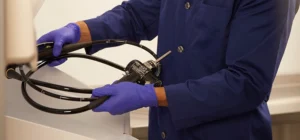A friend recently attended a conference in San Diego and sent along a photo of a local weather report which included a Microclimate Forecast.1 We shared a laugh by text, as San Diego seems like an odd place for such a complicated forecast.
Their use of “microclimate” describes different conditions along the coast, in the mountains, or out in the desert. In the same way, predicting microclimate can be tricky as it relates to patient skin care. Conditions vary widely patient to patient—and even on different areas of skin on the same patient’s body
Microclimate Defined
The NPUAP defines microclimate as “The temperature and humidity in a specific location. For purposes of support surfaces, microclimate refers to temperature and humidity at the support surface/body interface.”2
Simply put, microclimate is the weather on your skin. Think of how your fingertips become waterlogged after time in the pool. Your skin is overhydrated, spongy, and it doesn’t feel normal—making it vulnerable to pressure, sheer, and friction—just like patients at risk for pressure injury (PI).
Varying Patient Microclimates
Microclimate can vary based on a patient’s age, weight, diagnosis, comorbidities, and continence. Patients who are obese suffer PI rates 2-3x typical because their extra subcutaneous fat traps heat and leads to excessive sweating. These patients also have higher rates of other complications including diabetes, which affect the skin’s pH balance.

Even within the same patient, microclimate may vary greatly between the head, heels, elbows, and buttocks. Heels pose unique challenges because they’re further from the heart, leading to less circulation and poorer perfusion. Heels also tend to sweat. The buttocks are a challenge for some of the same reasons. They typically have thicker fat layers, tend to sweat more, and if a patient is incontinent, additional moisture affects the skin’s pH.
Support Surfaces for MCM
The challenges of microclimate management (MCM) don’t stop when moisture is removed. Patients can actually dry out too much, which sometimes happens during air-fluidized therapy. Picture yourself in a desert with a hot fan blowing. Over-evaporation can cause discomfort and dehydration.
The key to controlling microclimate is to find the sweet spot: not too wet, not too dry.3 Sweaty or heavy patients are likely to need a low air loss support surface, which uses airflow to manage temperature and moisture. Other patient microclimates may be adequately supported with specialty foam surfaces and regular skin checks of at-risk areas.

